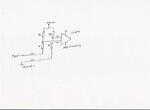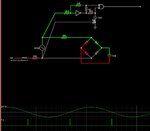denujith
Member level 5
I am planning to use LT1671 for zero crossing detection application.
But I have a concern that there might be a grounding issue...
LT1671 is powered from stepped-down voltage of V1. I need to measure zero crossing point of V2 signal - another stepped-down signal.
Since I have to connect grounds of V1 and V2, I need to know will there be any issues with that.
Thanks,
Lakmal
But I have a concern that there might be a grounding issue...
LT1671 is powered from stepped-down voltage of V1. I need to measure zero crossing point of V2 signal - another stepped-down signal.
Since I have to connect grounds of V1 and V2, I need to know will there be any issues with that.
Thanks,
Lakmal

